“Holiness, War, and Peace”: Ancient Jewish Traditions Concerning the Landscape and Ecology of Jerusalem and Its Environs in the Second Temple Period
Abstract
:1. Introduction
Research of Ancient Landscapes—Methodological Aspects
- The inhabited urban area, sometimes bordered by a protective wall.
- The agricultural hinterland that constituted the town’s economic foundation and included the cultivation of crops and orchards. A visual illustration of this belt, although from biblical times, is evident in the Lachish relief (see Figure 1) that embellished the walls of a room in Sennacherib’s castle at Ninveh (704–681 BC). The relief realistically portrays the conquest of Lachish in 701 BC by the Assyrian army and in the background it is possible to see crops typical of Eretz Israel, which grew in the agricultural hinterland outside the city: vines, figs, olives, and palm trees (Amar 1999; Kislev 2000).
- C.
- The external belt—an extensive uncultivated area of natural vegetation and sparse plant cover, designated “desert” (midbar) in Jewish sources (Ha-Reuveni 1991). Michael Zohary, one of the most prominent Israeli botanists in recent decades who reconstructed the ancient natural vegetation around Jerusalem, states that it was comprised of the next plants communities: of an oak and terebinth thicket, with woods of Jerusalem pines, and almond trees and hawthorns. The thicket and woods included many species of secondary plants, bushes, shrubs, and herbs (Zohary 1957). The flora that surrounded the city was a natural resource utilized for heating, cooking, and building, and sheep grazed among the vegetation.
2. “An Ecology of Holiness”: Cultivated Plants within the City Limits
[Jerusalem] may not be planted nor sown nor plowed and no garbage dumps may be maintained in it and no trees may be maintained, aside from the rose garden that was there from the time of the first prophets, and no garbage dumps may be maintained in it for reasons of impurity and no projections (zizin) or balconies (gezuztraot, from Greek: ἐξώστρα [exostra] = an upper chamber. See: Smith et al. 1890, E.4.exostra-cn) may intrude into the public domain for reasons of tent impurity.(Tosefta, Negahim 6: 2, Zuckermandel 1937, p. 625)
And no plantings may be made in it. And no gardens and orchards may be made aside from the rose gardens that have been there from the time of the first prophets.
2.1. The Ecological Prohibition against Growing Plants within the City Limits of Jerusalem
- A prohibition against maintaining lime furnaces, located for ecological reasons next to the walls, so that their smoke would not blacken the stones. Interestingly, in rabbinical times care was taken in private homes as well to keep the whitewashed walls from becoming sooty and black (when people cooked or used fire for heating purposes) and sooty walls were an indication of extreme poverty and need (Safrai 1983, pp. 58–59).
- A prohibition against protruding projections and balconies, so that the pilgrims would not bump into them and be hurt. In contrast to the Tosefta, which explains these regulations as based on religious reasons, according to the Babylonian Talmud that they have distinctly ecological justifications.
2.2. Rose Gardens in Second Temple Jerusalem
2.3. Refraining from Growing Plants in the City: Following Roman Influence?
3. Vegetation of Jerusalem in Times of Decline
3.1. Destruction of the Agricultural Hinterland and Deterioration of the Natural Vegetation during the Great Revolt
But Titus, intending to pitch his camp nearer to the city than Scopus, placed as many of his choice horsemen and footmen as he thought sufficient opposite to the Jews, to prevent their sallying out upon them, while he gave orders for the whole army to level the distance, as far as the wall of the city. So they threw down all the hedges and walls which the inhabitants had made about their gardens and groves of trees, and cut down all the fruit trees that lay between them and the wall of the city, and filled up all the hollow places and the chasms, and demolished the rocky precipices with iron instruments; and thereby made all the place level from Scopus to Herod’s monuments, which adjoined to the pool called the Serpent’s Pool.(Josephus 1895b, The Wars of the Jews Book 5, chapter 3, section 2)
He also at the same time gave his soldiers leave to set the suburbs on fire, and ordered that they should bring timber together, and raise banks against the city […] So the trees were now cut down immediately, and the suburbs left naked. But now while the timber was carrying to raise the banks, and the whole army was earnestly engaged in their works, the Jews were not, however, quiet.(Josephus 1895b, The Wars of the Jews 5, 6, 2)
3.2. The Acacia and Cinnamon Trees That Vanished as a Result of Jerusalem’s Destruction
R. Yochanan said: Every Shita tree that was taken by the invaders from Jerusalem will be restored to it by the Holy One, blessed be He, in time to come, as it says, “I will plant in the wilderness the cedar, the Shita tree” [Isa. 41: 19], and ‘wilderness’ means Jerusalem, as it is written, “Zion is become a wilderness” [Isa. 64: 9].(Babylonian Talmud 1882, Rosh ha-Shanah 23a)
The [fuel] logs of Jerusalem were of the cinnamon tree, and when lit their fragrance pervaded the whole of Eretz Israel. However, when Jerusalem was destroyed they were hidden.
4. Discussion and Conclusions
Funding
Conflicts of Interest
References
- Alon, Gedalya. 1975. The History of the Jews in Eretz Israel in the Mishnaic and Talmudic Period. Tel Aviv: Hakibbutz Hameuchad. [Google Scholar]
- Amar, Zohar. 1999. Agricultural Products in the Lachish Relief. Beit Mikra 159: 350–56. [Google Scholar]
- Amar, Zohar. 2002. The Book of Incense. Tel Aviv: Eretz. [Google Scholar]
- Amar, Zohar. 2012. The Plants of the Bible. Jerusalem: Reuven Mass. [Google Scholar]
- Babylonian Talmud, 1882, Vilna ed. Vilna: Reem.
- Bar-Oz, Guy, Ram Bouchnik, Ehud Weiss, Lior Weissbrod, Daniella E. Bar-Yosef Mayer, and Ronny Reich. 2007. “Holy Garbage”: A Quantitative Study of the City-Dump of Early Roman Period Jerusalem. Levant 39: 1–12. [Google Scholar] [CrossRef]
- Baruch, Eyal. 1999. The Agricultural Hinterland of Jerusalem during the Herodian Period. Cathedra 89: 41–62. [Google Scholar]
- Ber, Yitzhak. 1952. The Historical Foundations of the Halakha. Zion 17: 1–55. [Google Scholar]
- Bereshit Rabbah. 1885–1887. Vilna: Reem.
- Bidwell, Paul T. 2005. The systems of obstacles on Hadrian’s Wall: their extent, date and purpose. Arbeia Journal 8: 53–76. [Google Scholar]
- Bouchnick, Ram, Guy Bar-Oz, and Ronny Reich. 2010. On the Importance of Poultry in the Animal Economy of Judea in the Late Second Temple Period. New Studies on Jerusalem 16: 119–40. [Google Scholar]
- Buchler, Abraham. 1906. Der Galilaische Am-ha-Ares, Des Zweiten Jahrunderts. Wien: Holder. [Google Scholar]
- Carmichael, David L., Hubert Jane, Reeves Brian, and Schanche Audhild, eds. 1997. Sacred Sites, Sacred Places, One World Archaeology. London: Routledge, vol. 23. [Google Scholar]
- Casson, Lionel. 1984. Ancient Trade and Society. Detroit: Wayne State University Press. [Google Scholar]
- Chizik, Baruch. 1952. Otsar ha-Tsmahim [=A Treasury of Plants]. Herzlia: Chizik, Baruch. [Google Scholar]
- Devorzatzki, Esti. 1999. The Public health in Jerusalem in the Second Temple Period. In The Medicine in Jerusalem through the Ages. Edited by Efraim Lev, Zohar Amar and Joshua Schwartz. Tel Aviv: Eretz, pp. 7–32. [Google Scholar]
- Ekha Rabbah. 1885–1887. Vilna: Reem.
- Elior, Rachel. 2010. Paradise, the Holy of Holies and tabernacle. In Gan be-Eden Mi-Kedem: Traditions of Paradise in Israel and the Nations. Edited by Rachel Elior. Jerusalem: Magnes, pp. 105–41. [Google Scholar]
- Hershberg, Abraham Samuel. 1924. The Cultural Life in the Period of the Mishnah and Talmud: The fabric and the Fabric Industry. Warsaw: Abraham Joseph Shtibel. [Google Scholar]
- Ester Rabbah. 1885–1887. Vilna: Reem.
- Even-Shoshan, Abraham. 1975. The New Dictionary. Jerusalem: Kiryat Sefer. [Google Scholar]
- Felix, Yehudah. 1976. The World of the Biblical Plants. Ramat Gan: Massada. [Google Scholar]
- Felix, Yehudah. 1991. Agriculture in Eretz-Israel in the Period of the Bible, Mishnah and the Talmud. Jerusalem: Reuven Mass. [Google Scholar]
- Felix, Yehudah. 1997. Trees: Aromatic, Ornamental and of the Forest, in the Bible and Rabbinic Literature. Jerusalem: Reuven Mass. [Google Scholar]
- Gadot, Yuval. 2018. Jerusalem and the Holy Land(fill). Biblical Archaeology Review 44: 36–45, 70. [Google Scholar]
- Gafni, Isaiah. 1999. Jerusalem in Sage Literature. In Jerusalem Book: The Roman and Byzantine Period, Jerusalem. Edited by Yoram Tsafrir and Samuel Safrai. Jerusalem: Yad Yitzhak ben Zvi, pp. 35–59. [Google Scholar]
- Golak, Asher. 1941. On Shepherds and Breeding Small Cattle in the Destruction of the Second Temple Period. Tarbiz 12: 181–89. [Google Scholar]
- Goodman, Martin. 1999. The pilgrimage economy of Jerusalem in the Second Temple period. In Jerusalem, Its Sanctity and Centrality to Judaism, Christianity, and Islam. Edited by Lee I. Levine. New York: Continum, pp. 69–76. [Google Scholar]
- Grimal, Pierre. 1983. Roman Cities. Madison: The University of Wisconsin Press. [Google Scholar]
- Ha-Reuveni, Noga. 1991. Desert and Shepherd in Israel Heritage. Givatime: Neot Kedumim. [Google Scholar]
- Har-Shefer, Zvi. 1994. Ecology in Jewish Heritage. Haifa: Sha’anan College Publication. [Google Scholar]
- Hodge, Peter. 1977. Aspects Romans Life: Roman Towns, 2nd ed. London: Addison-Wesley Longman Ltd. [Google Scholar]
- Hopkins, Ian W. 1980. The City Region in Roman Palestine. PEQ 112: 19–32. [Google Scholar] [CrossRef]
- Huot, Jean-Louis. 1999. The Archaeology of Landscape. In Landscapes—Territories, Frontiers and Horizons in the Ancient near East. Edited by Lucio Milano, Stefano de Martino, Frederick Mario Fales and Giovanni Battista Lanfranchi. XLIV RLI (Part 1 Invited Lectures). Padova: Sargon, pp. 29–34. [Google Scholar]
- Jerusalem Talmud, 1523, Venice ed. Venice: Daniel Bomberg.
- Josephus, Flavius. 1895a. Antiquities of the Jews. In The Works of Flavius Josephus. Translated by William Whiston. Auburn and Buffalo: John E. Beardsley. [Google Scholar]
- Josephus, Flavius. 1895b. The Wars of the Jews. In The Works of Flavius Josephus. Translated by William Whiston. Auburn and Buffalo: John E. Beardsley. [Google Scholar]
- Kahana, Abraham. 1957. Apocrypha. Tel Aviv: Masada, vol. I. [Google Scholar]
- Kasher, Arye. 1983. The Great Jewish Revolt: Factors and Circumstances Leading to Its Outbreak. Jerusalem: Merkaz Zalman Shazar. [Google Scholar]
- Kern, Paul Bentley. 1999. Ancient Siege Warfare. Bloomington: Indiana University Press. [Google Scholar]
- Kislev, Mordechai. 1997. Garden of Roses. Sinai 120: 128–38. [Google Scholar]
- Kislev, Mordechai. 2000. The Sycamores in Lachish Reliefs—Identification according to Sages Words. In Jerusalem and Eretz-Israel: Arie Kindler Book. Edited by Joshua Schwartz, Zohar Amar and Irit Tzifer. Ramat Gan and Tel Aviv: The Ingeborg Rennert Center for Jerusalem Studies and Eretz Israel Museum, pp. 23–30. [Google Scholar]
- Kister, Menachem. 1998. Scrutinizing in Avot de-Rabbi Nathan: Version, and Commentary, Editing. Jerusalem: Yad Yitzhak ben Zvi and the Hebrew University in Jerusalem. [Google Scholar]
- Kluckert, Ehrenfried. 2000. European Garden Design: From Classical Antiquity to the Present Day. Bonn: Könemann. [Google Scholar]
- Kosman, Admiel. 1998. The House, the Garden, the Yard and the Menagerie in Sages’ Period. Asufot 11: 151–66. [Google Scholar]
- Kroiss, Samuel. 1924. Antiquity of the Talmud. Tel Aviv-Berlin and Vienna: Benjamin Hertz, vol. B/2. [Google Scholar]
- Levine, Lee I. 1984. Jerusalem—The City and the Temple in the End of the Second Temple period. In The History of Eretz Israel, Vol. 4: The Roman Byzantine Period, the Roman Period from the Conquest to the Ben Kozba War (63BC–135CE). Edited by Menachem Stern. Jerusalem: Keter, pp. 171–93. [Google Scholar]
- Levine, Lee I. 2002. Jerusalem: Portrait of the City in the Second Temple Period (538 BCE–70 CE). Philadelphia: The Jewish Publication Society. [Google Scholar]
- Lieberman, Saul. 1955. Tosefta. New York: Jewish Theological Seminary. [Google Scholar]
- Löw, Immanuel. 1934. Die Flora der Juden. Vienna-Leipzig: R. Löwit, vols. I–IV. [Google Scholar]
- Margaliot, Mordechai. 2000. Encyclopedia of Talmudic and Geonic Literature. Tel Aviv: Yavne and Sifre Hemed. [Google Scholar]
- Mazor, Lea. 2002. The bi-directional Connection between Paradise and the Temple. Shnaton—An Annual for Biblical and Ancient Near Eastern Studies 13: 5–42. [Google Scholar]
- Netzer, Ehud. 2001. Hasmonean and Herodian Palaces at Jericho: Final Reports of the 1973–1987 Excavations, Vol. 1: Stratigraphy and Architecture. Jerusalem: Israel Exploration Society. [Google Scholar]
- Perry-Gal, Lee, Adi Erlich, Ayelet Gilboa, and Guy Bar-Oz. 2015. Earliest economic exploitation of chicken outside East Asia: Evidence from the Hellenistic Southern Levant. Proceedings of the National Academy of Sciences of the United States of America 112: 9849–54. [Google Scholar] [CrossRef] [PubMed]
- Perry-Gal, Lee, Guy Bar-Oz, and Adi Erlich. 2015. Livestock Animal Trends in Idumaean Maresha: Preliminary Analysis of Cultural and Economic Aspects. Aram 27: 213–26. [Google Scholar]
- Peters, Francis E. 1986. Jerusalem and Mecca: The Typology of the Holy City in the Near East. New York: University Press. [Google Scholar]
- Rakover, Nahum. 1993. Environmental Issues, Theoretical and Legal Aspects of Jewish Sources. Jerusalem: Moreshet Hamishpat BeIsrael. [Google Scholar]
- Rappaport, Uriel. 1984. A History of Israel in the Period of the Second Temple. Tel-Aviv: Amikhai. [Google Scholar]
- Regev, Eyal. 2013. The Hasmoneans: Ideology, Archaeology, Identity. Göttingen: Vandenhoeck & Ruprecht. [Google Scholar]
- Reich, Ronny, and Eli Shukron. 2003. The Jerusalem city-dump in the late Second Temple Period. Zeitschrift des Deutschen Palastina-Vereins 119: 12–18. [Google Scholar]
- Safrai, Samuel. 1965. Pilgrimage to Jerusalem in the Second Temple Period. Tel Aviv: Am ha-Sefer. [Google Scholar]
- Safrai, Samuel. 1982. The Recovery of the Jewish settlement in Yavneh Generation. In Eretz Israel from the Destruction of the Second Temple to the Muslim Conquest, Vol. I: Political, Social and Cultural History. Edited by Zvi Baras, Shmuel Safrai, Menahem Stern and Yoram Tsafrir. Jerusalem: Yad Yitzhak ben Zvi. [Google Scholar]
- Safrai, Samuel. 1983. At the End of the Second Temple and the Mishnaic Period: Chapters in the History of the Society and Culture. Jerusalem: The Office of Education and Culture and the Zalman Shazar Center. [Google Scholar]
- Safrai, Ze’ev. 2011. The Memory of the Temple: Indeed Memory of the Temple and for What? Innovations in Jerusalem’s Research 16: 255–302. [Google Scholar]
- Safrai, Ze’ev, and Chana Safrai. 1993. The Holiness of Eretz Israel and Jerusalem: Characteristics of development of Idea. In Jews and Judaism in the Second Temple, Mishnah and Talmud Period. Edited by Menachem Stern, Isaiah Gafni and Aron Openheimer. Jerusalem: Yad Yitzhak ben Zvi, pp. 344–71. [Google Scholar]
- Schechter, Shlomo Zalman. 1945. Avot de-Rabbi Nathan. New York: Feldheim, Also published in the version of Vienna 1887. [Google Scholar]
- Schwartz, Joshua J. 1991. Lod (Lydda), Israel: From Its Origins through the Byzantine Period. BAR International Series 571; Oxford: Tempus Reparatum. [Google Scholar]
- Scott, Jamie, and Paul Simpson-Housley, eds. 1991. Sacred Places and Profane Spaces: Essays in the Geographics of Judaism, Christianity, and Islam. New York: Greenwood Press. [Google Scholar]
- Smith, William. 1875. A Dictionary of Greek and Roman Antiquities. London: John Murray, Available online: http://penelope.uchicago.edu/Thayer/E/Roman/Texts/secondary/SMIGRA*/Hortus.html (accessed on 12 June 2018).
- Smith, William, William Wayte, and George Eden Marindin. 1890. A Dictionary of Greek and Roman Antiquities. London: John Murray, Available online: http://www.perseus.tufts.edu/hopper/text?doc=Perseus%3Atext%3A1999.04.0063%3Aalphabetic+letter%3DE%3Aentry+group%3D4%3Aentry%3Dexostra-cn (accessed on 15 June 2018).
- Song of Songs Rabbah. 1885–1887. Vilna: Reem.
- Stoddard, Robert H., and Alan Morinis. 1997. Sacred Places, Sacred Spaces: The Geography of Pilgrimages. Baton Rouge: Geoscience Publications, Department of Geography and Anthropology, Louisiana: Louisiana State University. [Google Scholar]
- Tsafrir, Yoram. 1988. Eretz Israel from the Destruction of the Second Temple to the Muslim Conquest, Vol. II: Archaeology and Art. Jerusalem: Yad Yitzhak ben Zvi. [Google Scholar]
- Von Stackelberg, Katharine T. 2009. The Roman Garden: Space, Sense, and Society. London and New York: Routledge. [Google Scholar]
- Ward-Perkins, John Bryan. 1974. Planning and Cities: Cities of Ancient Greece and Italy—Planning in Classical Antiquity. New York: G. Braziller. [Google Scholar]
- Weiss, Ehud, Ram Bouchnick, Guy Bar-Oz, and Rony Reich. 2006. Garbage near the Temple: Some thoughts on the location of Jerusalem Second Temple period city-dump. In New Studies on Jerusalem 12. Edited by Eyal Baruch and Avraham Faust. Ramat-Gan: University of Bar-Ilan, pp. 98–108. [Google Scholar]
- Zichel, Meir. 1990. Environmental (Ecological) Issues in Jewish Sources. Responsa Project. Ramat Gan: Bar Ilan University Press. [Google Scholar]
- Zohary, Michael. 1957. The Flora and Vegetation in Jerusalem Landscape. In Jerusalem Book. Edited by Michael Avi-Yonah. Jerusalem: Mossad Bialik and Dvir. [Google Scholar]
- Zohary, Michael. 1969. The World of Plants. Tel Aviv: Am Oved. [Google Scholar]
- Zuckermandel, Moses Samuel. 1937. Tosefta. Jerusalem: Bamberger and Wahrmann. [Google Scholar]
| 1 | The Mishnah (“repeated study”) was redacted by R. Judah the Prince at the end of the second century CE. The Mishna is the first major written redaction of the Jewish oral traditions and laws. The Talmud (also Gemara, means “study” or “learning”) is a collection of commentaries on and elaborations of the Mishnah and certain auxiliary materials. The term “Talmud” refers to the Jerusalem Talmud (Talmud Yerushalmi) that was compiled in the Land of Israel (c. 400 CE) and the collection known as the Babylonian Talmud (Talmud Bavli), compiled by the scholars of Babylonia (c. 500 CE). |
| 2 | The Tosefta (“supplement,” “addition”) is a compilation of the Jewish oral law from the late second century CE, the Tanaitic era. The Tosefta compiled in Eretz Israel, and according to rabbinic tradition, it was redacted by the Tannaim R. Ḥiya and R. Oshaiah. Tannaim (“repeaters” or “teachers”) were the rabbinic sages whose views are recorded in the Mishnah and the Tosefta. |
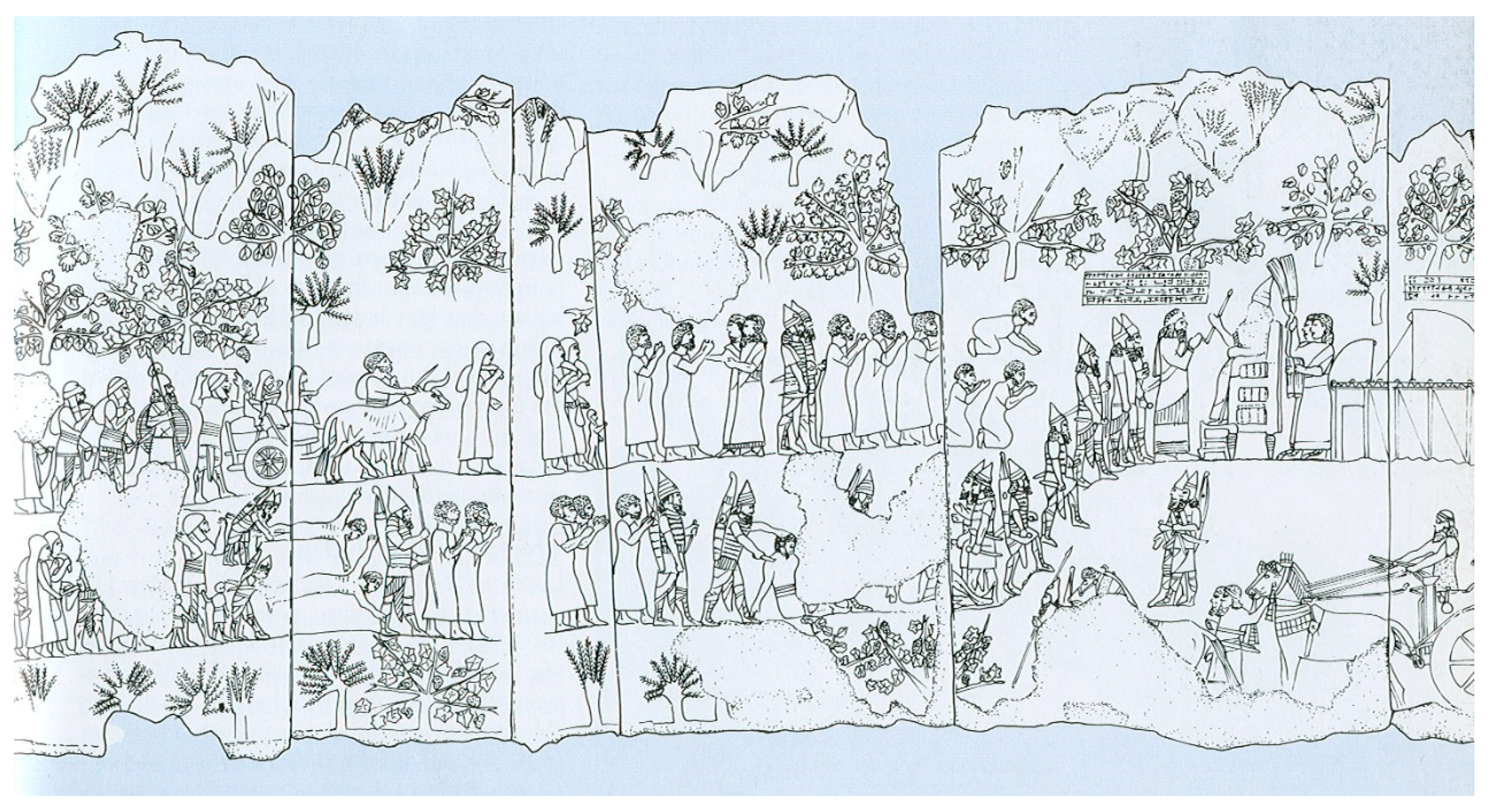
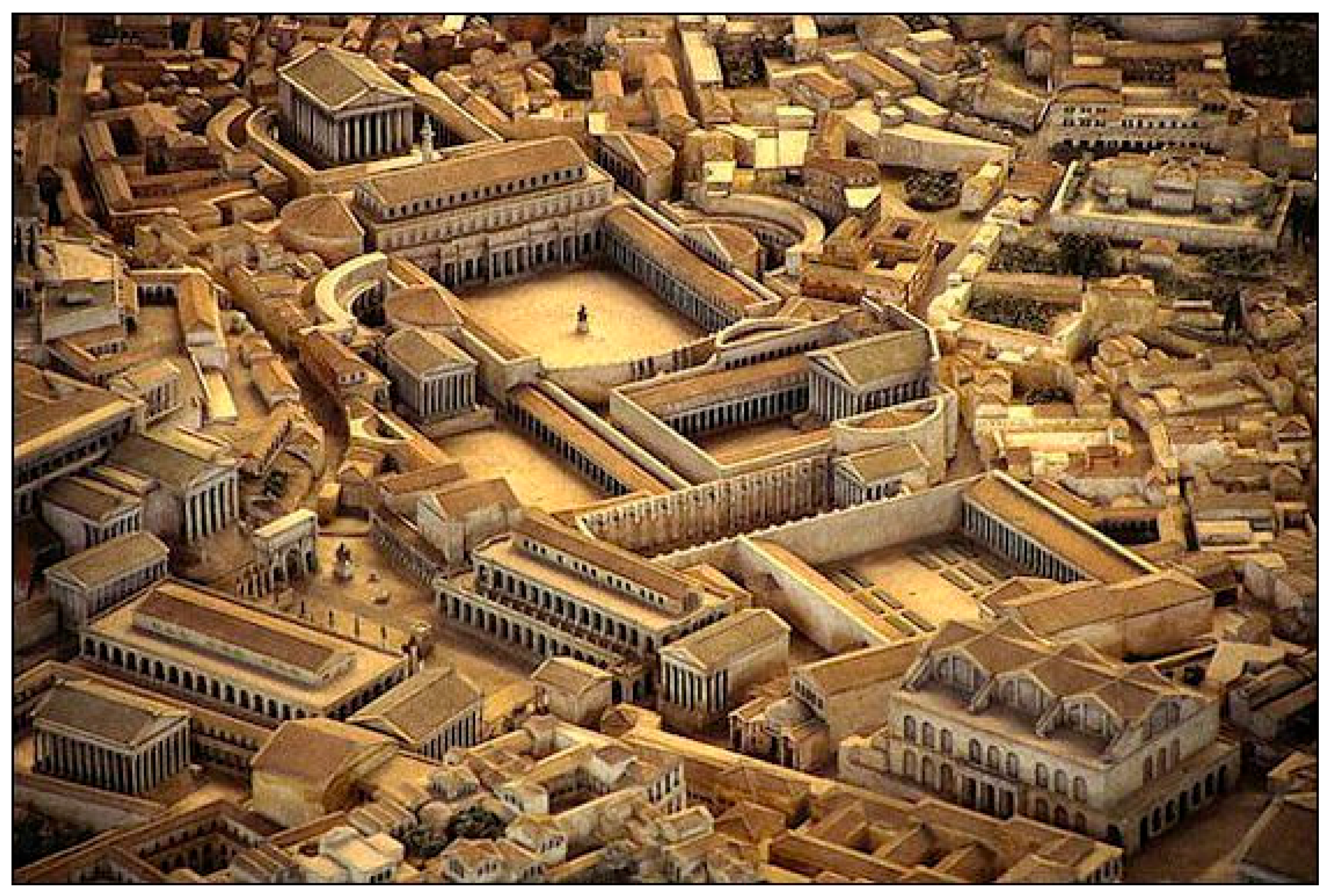
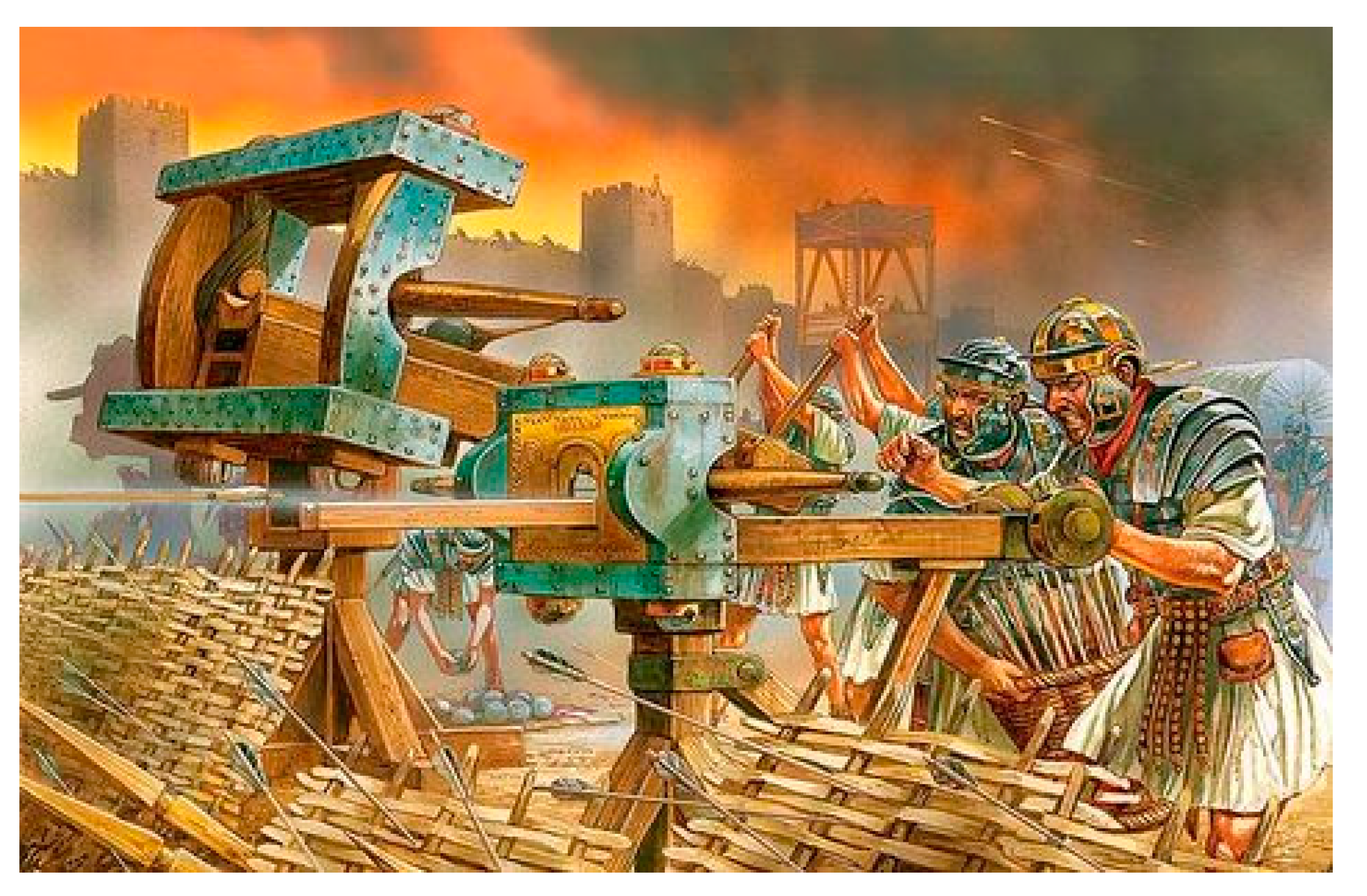
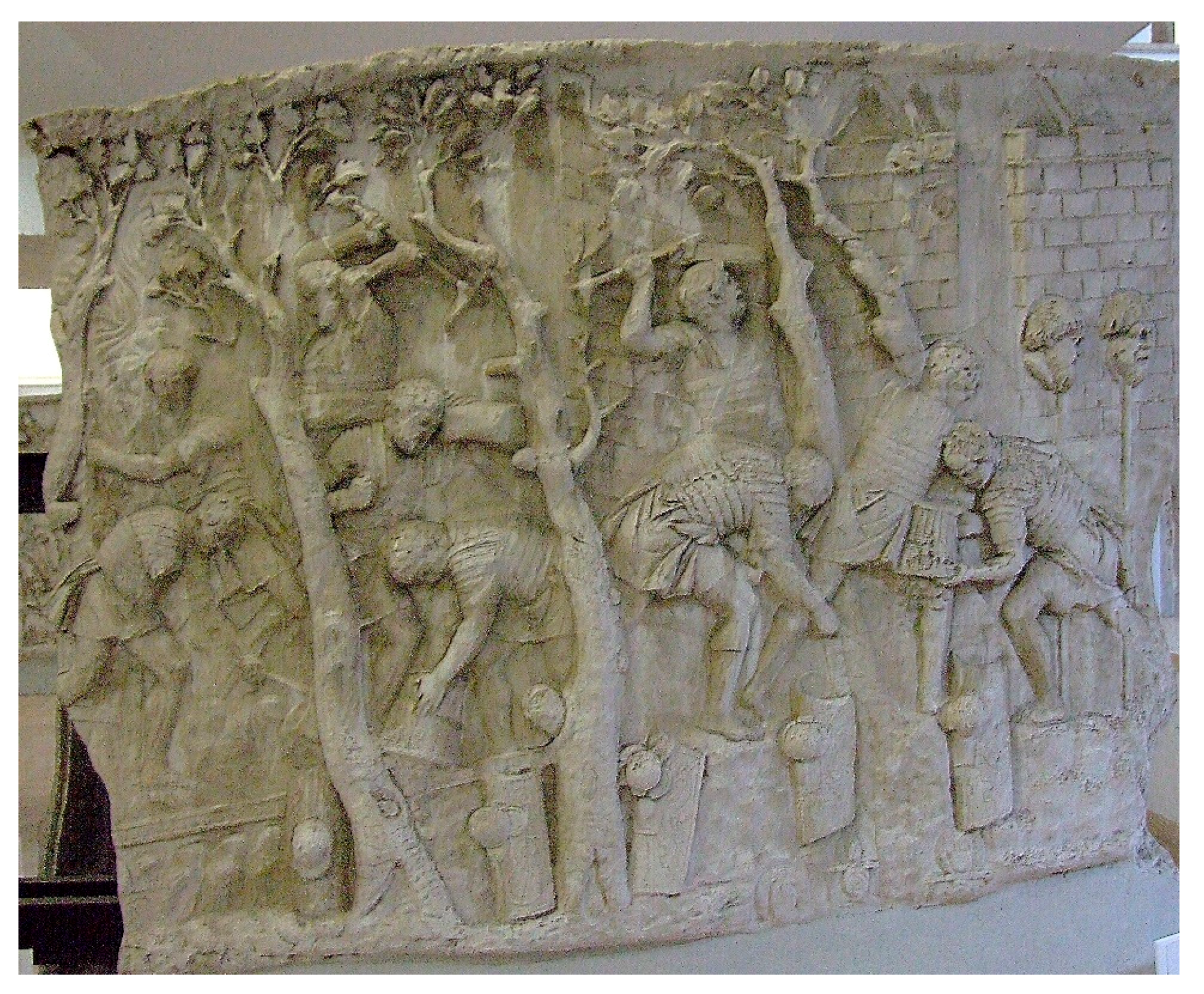
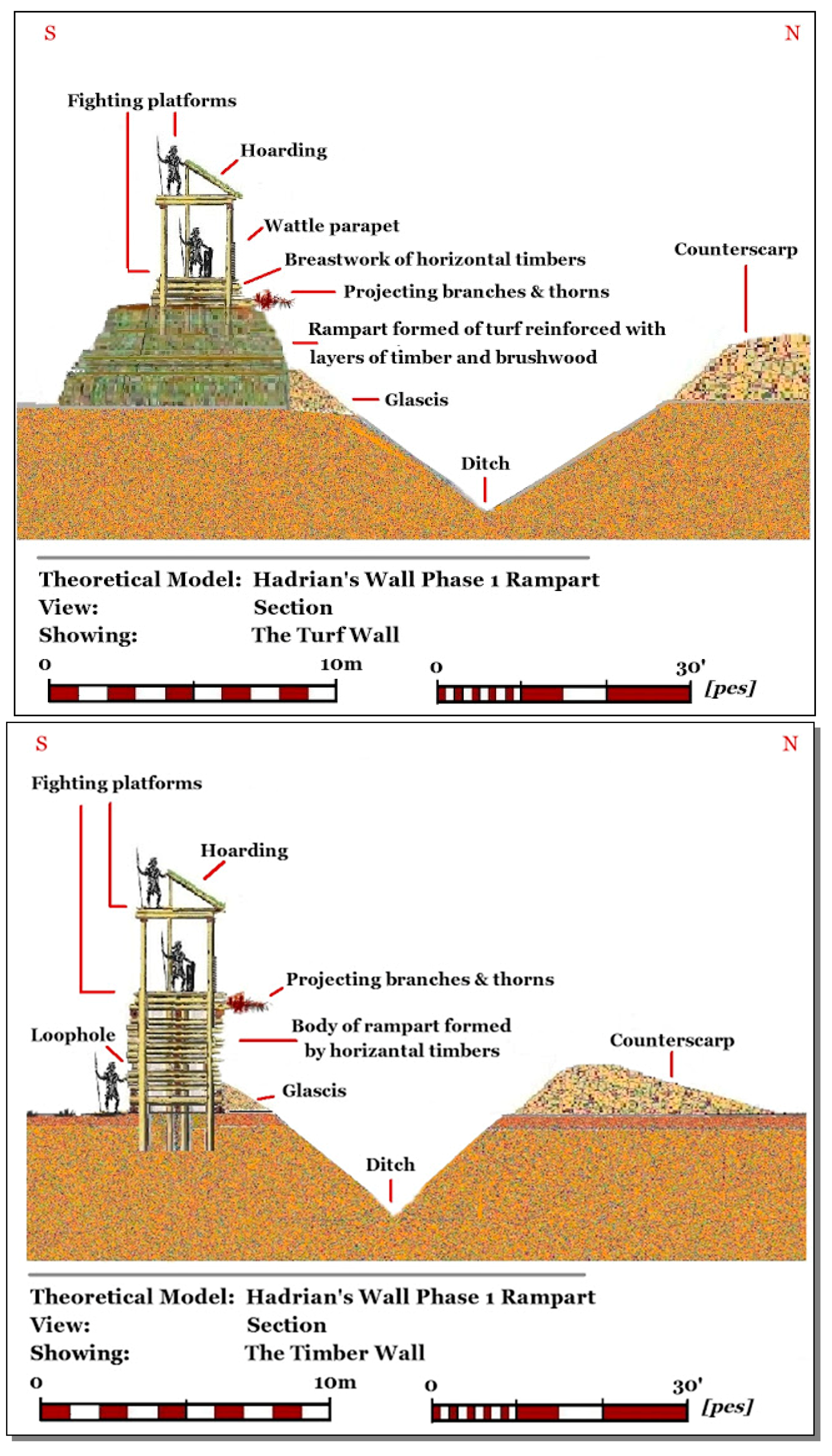
© 2018 by the author. Licensee MDPI, Basel, Switzerland. This article is an open access article distributed under the terms and conditions of the Creative Commons Attribution (CC BY) license (http://creativecommons.org/licenses/by/4.0/).
Share and Cite
Shemesh, A.O. “Holiness, War, and Peace”: Ancient Jewish Traditions Concerning the Landscape and Ecology of Jerusalem and Its Environs in the Second Temple Period. Religions 2018, 9, 241. https://doi.org/10.3390/rel9080241
Shemesh AO. “Holiness, War, and Peace”: Ancient Jewish Traditions Concerning the Landscape and Ecology of Jerusalem and Its Environs in the Second Temple Period. Religions. 2018; 9(8):241. https://doi.org/10.3390/rel9080241
Chicago/Turabian StyleShemesh, Abraham Ofir. 2018. "“Holiness, War, and Peace”: Ancient Jewish Traditions Concerning the Landscape and Ecology of Jerusalem and Its Environs in the Second Temple Period" Religions 9, no. 8: 241. https://doi.org/10.3390/rel9080241
APA StyleShemesh, A. O. (2018). “Holiness, War, and Peace”: Ancient Jewish Traditions Concerning the Landscape and Ecology of Jerusalem and Its Environs in the Second Temple Period. Religions, 9(8), 241. https://doi.org/10.3390/rel9080241



